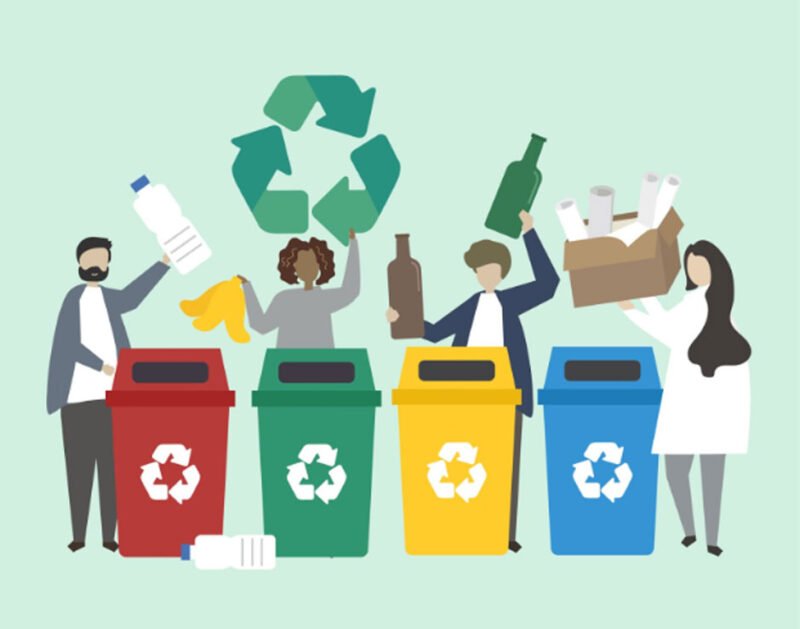Commercial waste management is now the main concern for UK businesses in the contemporary era of growing environmental awareness. Commercial waste recycling is now an essential component of corporate social responsibility and business efficiency rather than a minor concern. Decreasing a company’s carbon footprint, lowering landfill burden, supporting the conservation of natural resources, and assisting in the path toward a greener future make it a vital tool. An excellent recycling policy is also a potent brand values statement that draws interest from growingly environmentally conscious consumers and stakeholders.
For most firms, especially those involved in cleanups, renovations, or new constructions, utilising an inexpensive garbage collection service is one of the main enablers of doing so. The choice of cheap skip hire begins here. Providing the flexibility and cost effectiveness required to sort out and transport large quantities of recyclable materials, hiring is the best value as it ensures compliance and helps to meet sustainability objectives right from the start.
The Business Case for Recycling
Though the environmental argument is most important, recycling corporate trash is quite practical in business terms. Each year, the UK landfill tax rates rise; therefore, landfill disposal is the most expensive option for common commercial waste. Companies’ waste management costs can be much reduced by redirecting cardboard, plastic, glass, and metals into recycling streams. Furthermore, a good recycling programme can help to lower service charges by reducing the frequency of general trash pickup.
By reducing raw material use, recycling allows businesses to avoid changing commodity prices as well. Such a deliberate approach guarantees the business against growing disposal costs and possible regulatory fines while also reducing immediate running expenses, therefore turning waste management from a pure cost centre into a field for savvy financial saving and efficiency.
Employee Engagement and Establishing a Green Culture
Those who utilise a recycling system every day determine its ultimate success. Therefore, getting employee backing is critical. Using training, posters, and intranet newsletters, this is accomplished by appropriately communicating the objectives, benefits, and specific procedures of the programme.
Departments with “recycling champions” can inspire others and guarantee day-to-day participation regularly. Companies that actively involve their employees help to incorporate environmentally conscious behaviours into their corporate culture, therefore transforming environmental stewardship from a management necessity into an organisational value that boosts morale and team pride.
Reduction and Reuse in The Waste Hierarchy
In the commercial waste hierarchy, recycling is below prevention and reuse the best order for controlling garbage. Not creating garbage in the first place is the best approach to reducing environmental impact. First, businesses should evaluate their operations to find chances for savings, for example, changing to electronic documents instead of paper ones, eliminating single-use plastics in canteens, or choosing packaged products with less packaging.
Seeking reuse follows next; for example, filling reusable containers, donating old office equipment to charities, or repurposing packaging supplies. By keeping businesses from having to purchase new materials and cover disposal, an emphasis on these upper levels of the hierarchy relieves pressure on recycling infrastructure, saves even further energy and resources, and offers even more cost savings.
Business Waste Recycling Innovation Technologies
Technology is transforming the sector and giving businesses better ways to manage garbage. Software solutions today are starting to track digital trash, automatically create and store obligation of care paperwork, and present data on trends in waste creation. Intelligent bin sensors monitor fill levels in real time, enabling the maximisation of collection schedules to prevent overflow and unnecessary pickups, which in turn reduces collection vehicle emissions and expenses.
Advanced Material Recovery Facilities (MRFs) use artificial intelligence and optical scanners to sort materials with amazing accuracy, therefore increasing the quality and value of recycled goods. Such developments let companies measure their impact, boost efficiency, ensure compliance, and make wise decisions informed by data to improve their recycling efforts for top performance constantly.
Choosing the Best Waste Management Partner
The validity of a recycling program depends on the choice of a reputable, licensed waste carrier. Companies must do their research, verify a contractor’s licence on the Environment Agency website, and ensure they provide detailed proof of material disposal. Beyond just gathering, an efficient partner will help with professional segregation of garbage, comply with the law, and give open data on carbon savings and recycling rates.
They should have a policy for processing material in the United Kingdom and to maximise the percentage that is recycled rather than burned or exported. The right partnership ensures materials are handled responsibly from bin to new product by guaranteeing the environmental initiatives of a company are real and auditable.
Conclusion
One vital road for modern companies, commercial waste recycling combines moral responsibility, economic benefit, and legal requirement. Starting with a waste audit and ending in a corporate cultural shift supported by the right technology and alliances, it calls for an organised strategy.
Businesses can achieve significant environmental and economic benefits by prioritising reduction and reuse over recycling, as outlined in the waste hierarchy. Such dedication enables better brand image, stronger stakeholder relations, and major contributions to the circular economy. Ultimately, following thorough recycling policies guarantees not only a more environmentally friendly planet but also a more resilient, effective, and respected business.






